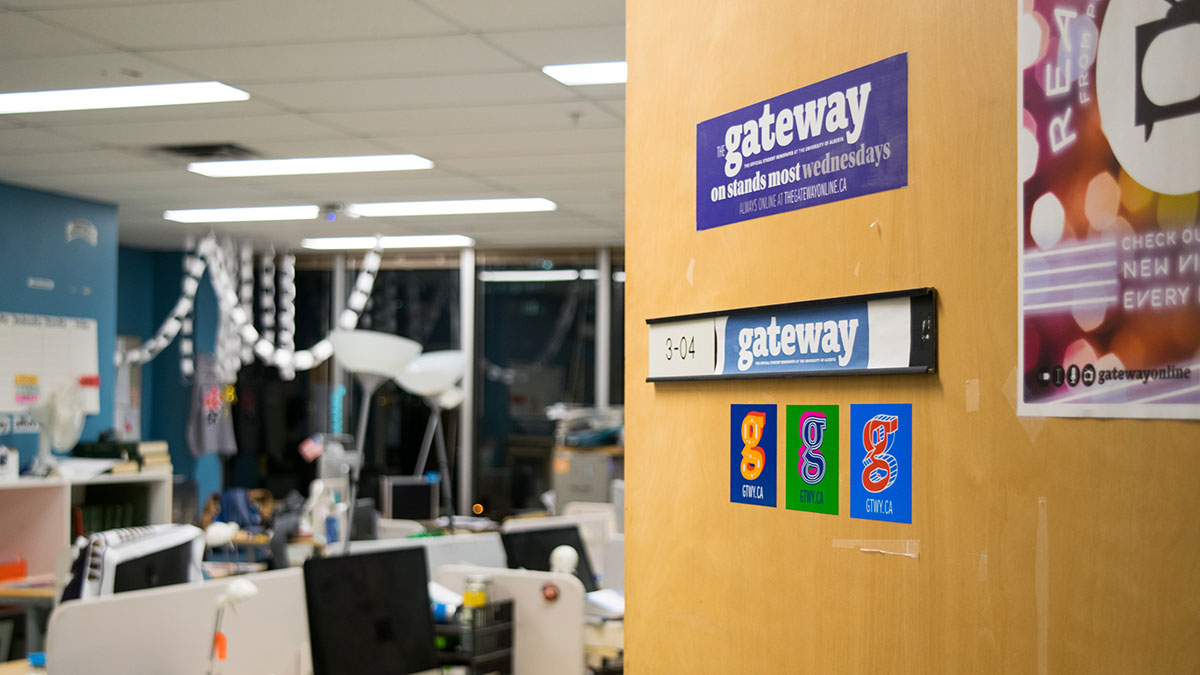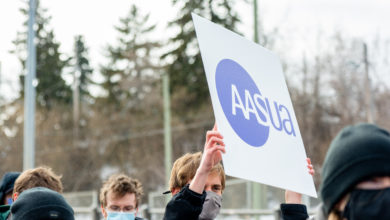 Christina Varvis
Christina VarvisYou don’t expect your first hate campaign to come before your first paycheck. But for student journalists, that’s the reality. Write one controversial article, and a so-called media watchdog might just decide you’re the story.
At first glance, HonestReporting Canada (HRC) presents itself as a media accountability organization. An outlet ensuring fairness in the coverage of Israel and the Middle East. But for many student journalists and small campus outlets, the experience is not constructive critique but harassment, defamation, and a calculated campaign to discredit young reporters. The Gateway at the University of Alberta — despite being a student publication — has become a frequent target. The aggressive tactics used against it offer a warning to all who dare to practice journalism in contested terrain.
The fundamental problem is not that HonestReporting criticizes coverage it dislikes. Journalism is open to critique. However, HRC employs tactics far beyond conventional media criticism. HRC centralizes public pressure campaigns, petitions, alerts, and reputational attacks meant not just to highlight errors, but to brand individual journalists or outlets as untrustworthy or extremist. Such efforts can lead to flooding editors’ inboxes, triggering social media shaming, and undermining their professional reputation even before any formal adjudication.
Journalists and media watchers have called out these tactics. As one investigation put it, “HRC is committed to launching slanderous and bad faith attacks against groups of media professionals … to derail their work and tarnish their reputation.” The Canada Press Freedom Project, working through J-Source, has flagged HRC’s methods as involving online threats, chilling statements, and reputational targeting. Another profile in The Maple documented how HRC’s campaigns often conflate criticism of Israel with propaganda for “disgusting,” “defamatory” reporting.
In the case of The Gateway, HonestReporting has leveled repeated public attacks with language that goes well beyond critique of content. One HRC petition titled “University of Alberta Student Newspaper Gives Extended Coverage to Anti-Israel Demonstration, Providing No Challenge or Context to Anti-Israel Disinformation” accuses the editors of failing to contextualize or correct “disinformation.” Another HRC petition labels a Gateway article “fawning” toward a campus encampment. Moreover, it accuses the authors of deviating “from any journalistic ethics” and offering “free publicity” to a movement. These accusations implicitly question the competence and integrity of student writers, branding them as ideologically biased or intellectually irresponsible.
By casting young student journalists as reckless or ideologically compromised, HRC does two things. It shifts the burden of defense onto those least able to defend themselves. It also creates chilling pressure on future coverage. If each critical piece risks being treated as a moral failing or smear, then editorial caution becomes the path of least resistance.
It’s worth observing that The Gateway is not a university-run mouthpiece but an independent student press. Yet HRC treats it like any other media outlet — deploying the same slandering posture reserved for major newsrooms. The difference is that student journalists lack institutional buffers. They don’t have seasoned PR staff, legal departments, or veteran reputations to resist reputational attacks.
Young editors and reporters hence face a raw choice: push through and absorb the backlash, or moderate and self-censor. The more frequent and public the attacks, the greater the psychological toll, especially for writers still learning their craft.
Another troubling dimension is how HRC weaponizes moral accusation. Petitions go beyond stating ‘you erred,’ using rhetoric designed to provoke outrage. It often frames student reporting as harmful, sympathetic to extremism, or even complicit in propaganda. In doing so, it moves the argument from “this article had flaws” to “this newspaper is dangerous.” This essentially disqualifies the journalist’s voice before readers can judge.
These tactics are part of a broader pattern — HRC employs them widely. In its campus alerts, it routinely smears multiple student publications by name, asserting entrenched “anti-Israel narratives,” “cartoonishly sub-par journalism,” or echoing tropes about campus media being echo chambers. These labels tend to stick. Audiences often continue to distrust outlets that HRC publicly frames in those terms.
HRC is organized around a large membership and mobilization. Because of this, it can impose a scale of pressure that student newsrooms cannot match. A flood of email complaints or social media posts, triggered by an HRC alert, can overwhelm a small student editorial team. The perception of mass outrage — even if manufactured — becomes a form of indirect coercion.
The broader journalism community has taken some notice. J-Source, via the Canada Press Freedom Project, has encouraged targeted journalists to document threats and publicize HRC’s techniques. In The Maple, HRC’s critics have described its tactics as coordinated defamation and have urged journalists to report harassment. Even the Canadian Association of Journalists (CAJ) has internal commentary labeling HRC’s “bullying and intimidating” practices as unacceptable. Though, critics argue these rebukes have not translated into substantive institutional defence.
Yet that brings another point of frustration. Organizations purported to defend journalism — such as Canadian University Press (CUP) — have been conspicuously absent in public defence of student newsrooms under fire. CUP, as a network of student publications, is uniquely positioned to mobilize solidarity, issue statements, or coordinate collective pushback when one of its members is targeted. Silence from CUP allows the burden of defence to rest entirely on the student newsroom itself.
One might argue that responding to HRC might risk amplifying its bullying tactics. But silence is also a strategy. Absence of pushback allows the narrative to drift unchallenged. The imbalance in capacity (HRC with institutional tools, students without) means that silence cedes ground. Even a modest show of institutional backing — an open letter, a solidarity editorial, legal resource sharing — can recalibrate the terms of engagement and reduce the sting of public shaming.
The implications extend beyond The Gateway. If student journalists watching this campaign internalize the message that coverage will be treated not as part of discourse but as character assault, many will avoid contentious topics altogether. That shrinks the space of inquiry and turns student journalism into an exercise in risk avoidance rather than debate.
That, ironically, aligns well with the underlying incentive structure of HRC’s tactics: not just correcting errors, but shaping gatekeepers. Young journalists who get burned once learn quickly to stay inside safe boundaries, softening their critical instincts and avoiding stories inviting hostile attention.
In that sense, the real threat HonestReporting poses is not to any particular article but to the culture of student journalism itself. The pressure is not only external. It invites internalized caution, a steady trimming of boldness. Over time, student outlets may lose the disposition to push limits.
Young writers do not deserve to be slandered for doing the work of public inquiry. When external organizations like HonestReporting cross the line from critique to personal delegitimization, they threaten one of the few arenas left where students can learn to push boundaries — before they are silenced altogether.




